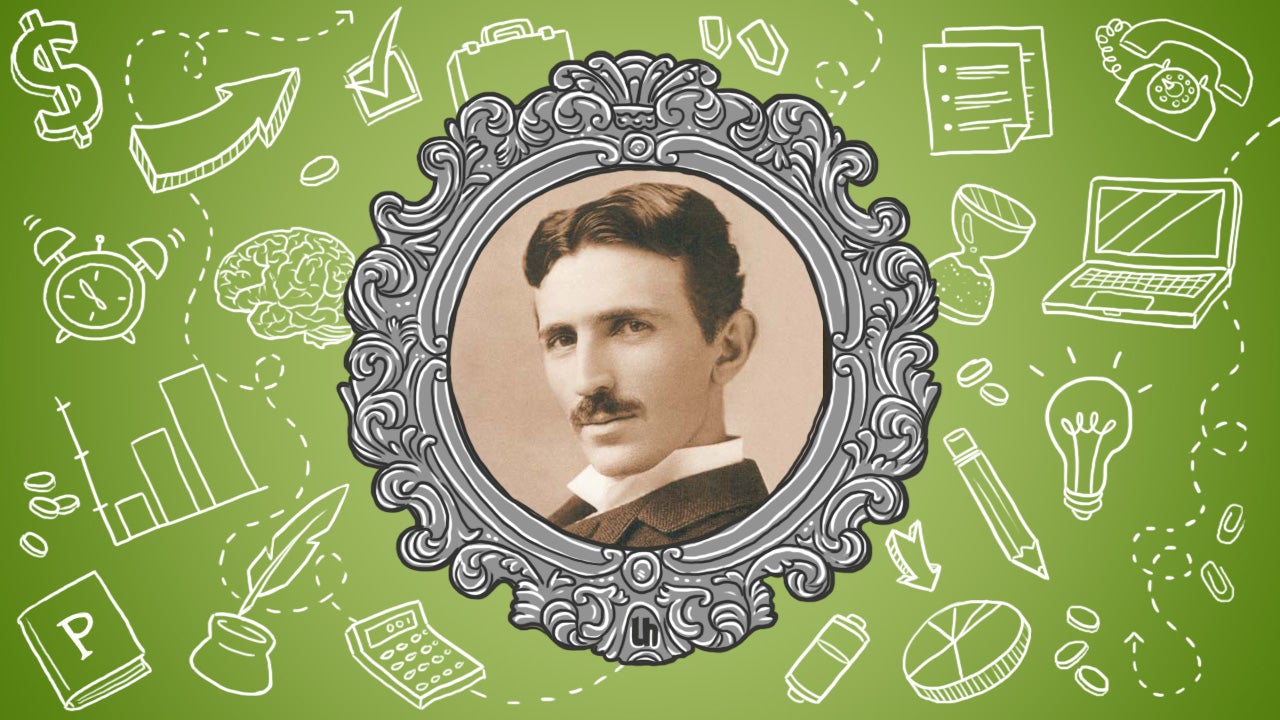
Inventor
Nikola Tesla has certainly become one of the internet's darlings over
the years. Part of the reason for that is because he managed to do a lot
with his life. With that in mind, let's take a look at what was behind
the brain that helped make Tesla so productive.
Nikola Tesla is most famously known for his contributions to the design of the alternating current electricity system, but he's also credited with around 300 other patents
for all kinds of inventions. Throughout his life, he was continually
working on projects and getting things done. While he certainly had his
share of bad habits (he'd often work on two hours of sleep),
one doesn't do as much as Tesla did without a strict set of
productivity tips. To that end, here are a few things we can all learn
from how he got things done.
Take Time to Really Think Before Building
Nikola Tesla often talked about how he could visualize machines, and rarely drew out schematics before he started building. The process, often referred to as visual thinking, isn't ingrained in all of us, but we've shown you how to identify it before. Even if it's not a trait most of us have, the idea to just concentrate on the end product is certainly something we've talked about before, and creative thinking often requires that you relax and just work through problems in your head.
My method is different. I do not rush into actual work. When I get an idea I start at once building it up in my imagination. I change the construction, make improvements and operate the device in my mind. It is absolutely immaterial to me whether I run my turbine in thought or test it in my shop. I even note if it is out of balance. There is no difference whatever, the results are the same. In this way I am able to rapidly develop and perfect a conception without touching anything. When I have gone so far as to embody in the invention every possible improvement I can think of and see no fault anywhere, I put into concrete form this final product of my brain. Invariably my device works as I conceived that it should, and the experiment comes out exactly as I planned it. In twenty years there has not been a single exception. Why should it be otherwise? Engineering, electrical and mechanical, is positive in results. There is scarcely a subject that cannot be mathematically treated and the effects calculated or the results determined beforehand from the available theoretical and practical data. The carrying out into practice of a crude idea as is being generally done is, I hold, nothing but a waste of energy, money and time.
We can't
all sit around thinking about projects until they become a working
machine in our brains, but Tesla's brand of thinking still works as an
experiment most of us will benefit from taking the time to do. More
importantly, he wasn't born with these skills either, he did certain exercises to train his brain as a child:
Although I must trace to my mother's influence whatever inventiveness I possess, the training he gave me must have been helpful. It comprised all sorts of exercises—as, guessing one another's thoughts, discovering the defects of some form or expression, repeating long sentences or performing mental calculations. These daily lessons were intended to strengthen memory and reason and especially to develop the critical sense, and were undoubtedly very beneficial.
Sit
back, and try to visualize how something might work when you're done
with it. This might be a work project, a DIY project, or even just a
change in the way you do things. From the smallest parts to the biggest,
go through it in your head to figure out how you want it to work. You
might be surprised at how well you can get that machine working in your
brain. The idea isn't all that different from memory tricks like the memory palace, which builds on our spatial reasoning to memorize and visualize things better.
Take a Walk
We've seen the benefits of going out for a quick walk time and time again to boost creativity. Tesla seemed to adhere to this idea as well, and although his walking habits eventually became an obsessive compulsive habit, he shares that several of his "eureka" moments came when he was out for a walk. One of the more famous examples of this is when Tesla came up with his idea of the alternating current:
In 1881, Tesla moved to Budapest, after recovering from his breakdown, and he was walking through a park with a friend, reciting poetry, when a vision came to him. There in the park, with a stick, Tesla drew a crude diagram in the dirt—a motor using the principle of rotating magnetic fields created by two or more alternating currents. While AC electrification had been employed before, there would never be a practical, working motor run on alternating current until he invented his induction motor several years later.
The idea
here is that when you leave your workspace, take a walk, and let an idea
incubate, you're more likely to come to the solution you're looking
for. It doesn't have to mean taking a walk, but it's good to step out of
your box, and do some creative thinking on the go now and again.
Work Through Problems with a Bit of Solitude
Like many inventors and creative types, Nikola Tesla was an advocate for solitude when creating and working. Most famously, he's quoted as saying:
"The mind is sharper and keener in seclusion and uninterrupted solitude. No big laboratory is needed in which to think. Originality thrives in seclusion free of outside influences beating upon us to cripple the creative mind. Be alone, that is the secret of invention; be alone, that is when ideas are born."
The idea that you need to work in solitude to get things done is by no means new. We've talked before about how it can boost creativity, and how setting aside some alone time is a great way to recharge to boose productivity. In the end, it's all about productive introspection and using your alone time well.
Most of us
don't need to work through as complex of problems as Tesla, but that
doesn't mean we can't benefit from a little solitude now and again while
working through issues. If you're struggling to come up with ideas or
get things done, don't be afraid to step away for a bit.
92


No comments:
Post a Comment